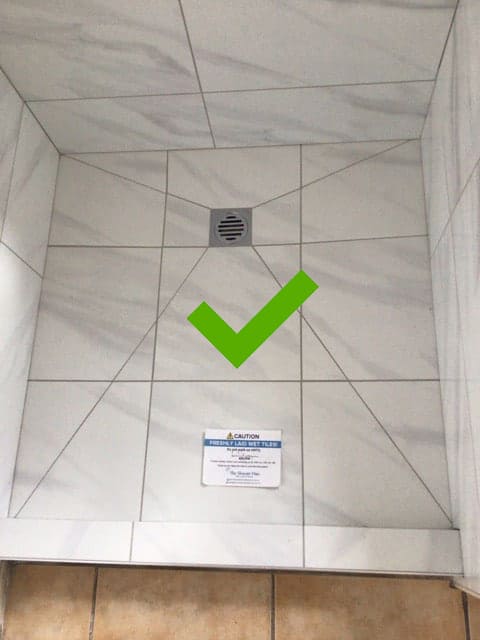Listed here below yow will discover a lot of outstanding expertise regarding Common Causes of Water Damage in a Bathroom.

The restroom is extremely at risk for wet build-up and possible water damages due to the constant use water in it. This short article offers basic evaluation strategies to assist spotting water damages dangers.
The regular use water in the shower room makes it very at risk for damp accumulation and also prospective water damage. By checking it frequently, you can reduce water relevant damages.
The adhering to set of examinations is simple to perform as well as need to be done when in every three months in order to maintain your restroom healthy and to stop prospective water problems caused by the tub, the shower, pipeline joints as well as plumbing, sinks, cabinets, as well as the toilet
Do not disregard executing these evaluations and also be comprehensive while doing them. Keep in mind that these easy examinations can save you a great deal of money by supplying early indicators for water damages
Tub and also Shower
The shower and tub require special focus and upkeep. Check the floor tiles and also change if broken. See to it that there is no missing cement in between the tiles. Evaluate and change fractured caulking at joints where the walls satisfy the flooring or the bathtub. Blocked drains pipes and pipelines troubles will stop the bath tub from drying as well as might show major issues under the bathtub. Speak with an expert immediately to prevent structural damages. Take notice of discolorations or soft areas around the tub wall surfaces as they might show an internal leak.
Plumbing
Signs for water damages are tough to identify because many pipes are set up inside the wall surfaces.
Pay unique focus to floor covering and walls moisture as well as spots as they might show an unseen plumbing problem. Check moisture levels in adjoining spaces also.
Sinks and also Cabinets
Sinks and also closets are exposed to moisture and humidity daily and are typically ignored. Check consistently under the sink and also on the kitchen counter over it. Fix any kind of drip in the catch as it might recommend drainpipe troubles. Check out the sink, slow-moving draining pipelines might show an obstructed drainpipe. Change sink seals if they are broken or loose.
The Bathroom
The bathroom is a susceptible water junction. Check the water lines and look for leakages around the commode seat, in the tube, and also under the water tank. If you detect any signs of dampness on the flooring around the bathroom, check for leaks in the toilet rim and container seals.
Realize that hanging bathroom bowl deodorants increases the chances for obstructions.
Water Damage Signs In The Bathroom To Avoid Cleanup
Musty smell
This is one of the easiest signs to catch because musty smells are so odorous. The damp, earthy, moldy smell should be a big red flag. The smell will develop when moisture gets trapped in surfaces, and begins to facilitate mold growth. Leaking pipes under cabinets, inside walls, and behind shower fixtures will cause moisture to stay trapped and not dry, which will lead to mold growth and spread. As soon as you notice any musty smells in your bathroom, have it checked for hidden water damage and cleanup signs.
Visible mold
If the smell isn’t there to give it away, sometimes you will actually see mold growth. Finding mold in your bathroom is a serious problem, because mold is very harmful to your health. By the time mold growth is visible, it also means that water damage has already occurred and been present for some time. The only way the mold problem can be resolved is to find the source of the moisture and get it stopped. To safely and adequately remove mold, you need to have professionals handle the remediation. Do not waste any time in getting mold problems addressed, fixed, and sanitized so that you can protect you and your family from the many respiratory symptoms caused by mold exposure.
Damaged floors
Bathroom floors should be able to withstand some exposure to water while still remaining in good condition. However, when excess exposure or water leaks occur, they will begin to damage even the most water-resistant flooring. If you notice any cracking, bubbling, staining, or warping on your bathroom floors, there is probably a water leak somewhere causing the distortion. If you notice areas of the floor have become softer, or even have a spongy feeling, there is probably damage to the subfloor. Subflooring is typically made up of plywood. When plywood is exposed to water or moisture, it will absorb it. Once it has become saturated, the weight of the excess water will cause the wood to swell and soften. Check the floors in your bathroom frequently to catch any of these sings before they lead to damaged subflooring.
Changes on walls
When water leaks behind walls, it will cause changes in the drywall. Peeling plaster, blistering paint, and soggy wallpaper are all good indicators that excess water is building up behind the wall. Water leaking behind drywall will cause it to swell and be soft to the tough. If you start to notice gaps along the trim of your walls, or where tile meets the wall, it could also be a strong indicator that there is a leak behind the wall. Any changes, distortion, or damage on the walls should be evaluated as soon as you notice it to prevent further water damage and cleanup.

I ran across that page on How to Repair and Prevent Bathroom Water Damage when doing a search on the search engines. If you please take the opportunity to share this write-up if you appreciated it. I am grateful for your time. Visit again soon.
Book With Us Today!